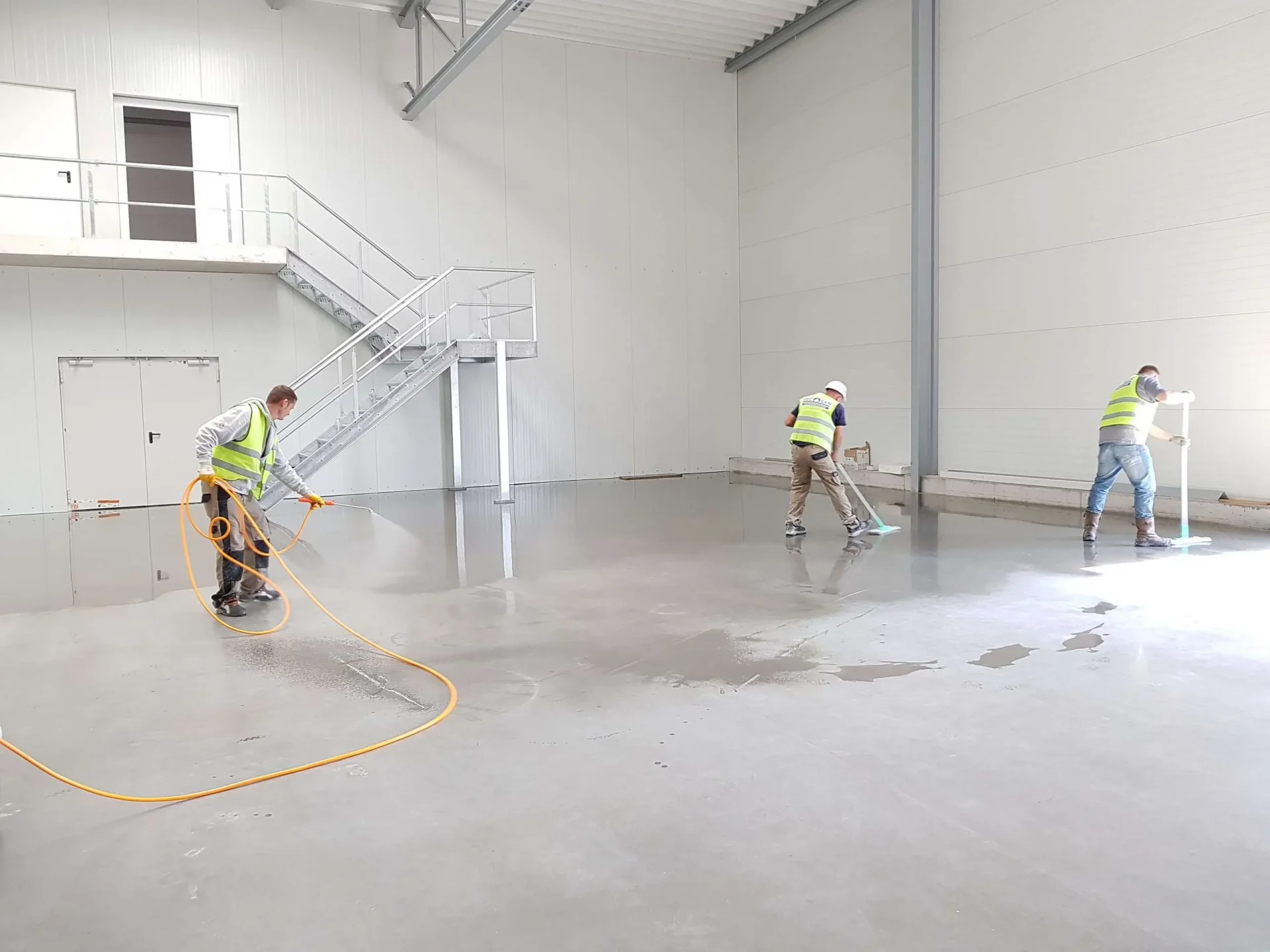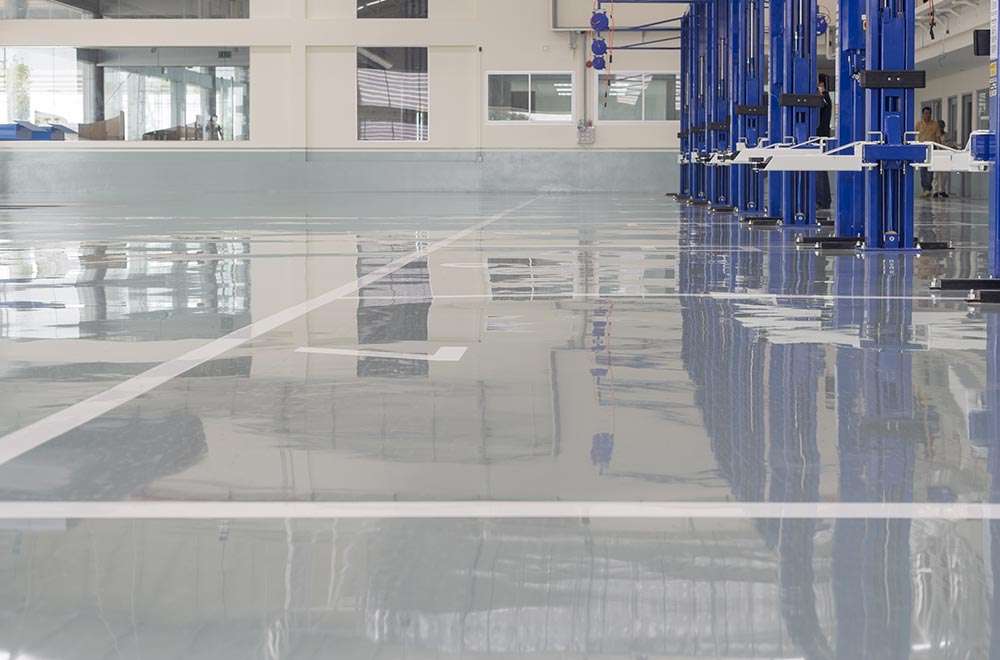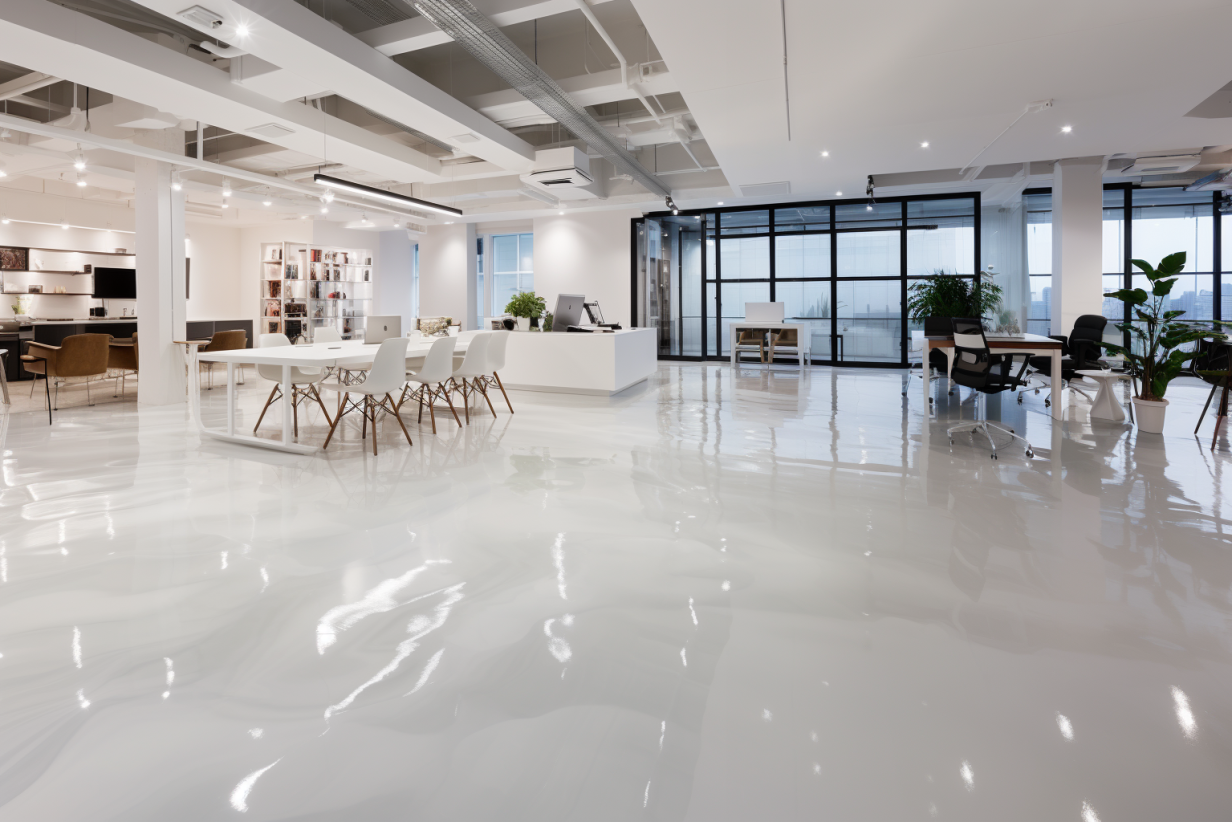
Epoxy flooring installation can transform residential garages, driveways, and commercial spaces into durable and visually appealing surfaces. However, improper installation can lead to a range of issues, costing time and money to fix.
As a business that specialises in both residential and commercial epoxy flooring in Brisbane, we’ve seen it all. Here’s how you can avoid the common pitfalls of epoxy flooring installation and ensure long lasting, high quality epoxy floors.
Table of Contents

The foundation of any successful epoxy flooring installation lies in thorough surface preparation. Without proper prep, your epoxy may not adhere correctly, leading to bubbling, peeling, and premature failure. Every surface must be meticulously cleaned, dried, and, if necessary, repaired before applying any epoxy coating.
For concrete surfaces, this often means diamond grinding or shot blasting to create a rough texture that allows the epoxy to bond effectively. Neglecting this step is one of the most common mistakes made by DIY enthusiasts and even some inexperienced contractors.
Epoxy flooring is highly sensitive to environmental factors like temperature and humidity. In Brisbane’s variable climate, it’s crucial to monitor these conditions closely.
High humidity can cause a cloudy finish, while applying epoxy at the wrong temperature may result in improper curing. Ideally, epoxy should be applied when temperatures are stable and humidity levels are low. During extreme conditions, postponing the installation might be necessary to ensure optimal results.
Not all epoxy products are created equal. Inferior products might be cheaper, but they often lack the durability and finish that premium grade epoxy offers.
When installing epoxy flooring in high traffic areas like garages or commercial spaces, it’s essential to choose materials that are specifically designed to withstand heavy loads, abrasion, and chemicals. Investing in high quality epoxy will save you from costly repairs and replacements down the road.
Epoxy is a two-part system, consisting of a resin and a hardener. Mixing these components in the correct ratio is crucial to achieving a durable and evenly cured floor.
Many DIY installers either rush through this process or mix the components incorrectly, leading to uneven results or an epoxy that never fully cures. Taking the time to measure and mix thoroughly ensures a strong, smooth finish that lasts.
Applying epoxy in thin layers is key to achieving a uniform and durable finish. Each layer needs to be allowed to set properly before applying the next one. Rushing this process or applying too thick a layer can result in bubbling, cracking, or uneven surfaces.
For commercial epoxy flooring, where durability is paramount, it’s critical to follow manufacturer recommendations on layer thickness for the best performance and longevity.
Patience is crucial when it comes to curing epoxy. Many people make the mistake of walking on or moving items back onto their newly installed epoxy floor before it has fully cured. This can lead to indentations, scratches, or damage that is difficult to repair.
Depending on the product and the environment, curing times can vary, but generally, you should allow at least 24-48 hours before light foot traffic and up to seven days for full use.
Epoxy floors, particularly those installed over large areas, must account for expansion and contraction due to temperature changes. Ignoring expansion joints can cause the floor to crack as the concrete beneath it shifts. It’s essential to either avoid covering these joints or to use a flexible joint filler that allows movement while maintaining the integrity of the epoxy.

With our extensive experience in both residential and commercial epoxy flooring in Brisbane, we understand the specific challenges of epoxy installation. Here are five reasons why our business is the right choice for your epoxy flooring needs:
Contact us today for more details or to request a free quote for your epoxy flooring project.
For epoxy flooring installation, the best preparation involves thorough cleaning, repairing cracks, and roughening the surface using diamond grinding or shot blasting to ensure proper adhesion.
After epoxy flooring installation, typically, it takes 24-48 hours for light foot traffic and seven days for full curing. However, this can vary based on temperature and humidity levels.
It’s possible, but care must be taken to control humidity levels during installation to prevent cloudiness or improper curing.
Bubbles or peeling are usually caused by poor surface preparation, incorrect mixing, or applying epoxy under unsuitable environmental conditions.
Yes, but it’s essential to use a product designed for outdoor use that can withstand UV rays and temperature fluctuations.
For residential areas like garages, 2-3mm is typical. In commercial settings, thicker layers of 5mm or more may be required for durability.
While epoxy floors are low-maintenance, regular cleaning and occasional resealing can help prolong their lifespan and keep them looking fresh.
| M | T | W | T | F | S | S |
|---|---|---|---|---|---|---|
| 1 | ||||||
| 2 | 3 | 4 | 5 | 6 | 7 | 8 |
| 9 | 10 | 11 | 12 | 13 | 14 | 15 |
| 16 | 17 | 18 | 19 | 20 | 21 | 22 |
| 23 | 24 | 25 | 26 | 27 | 28 | 29 |
| 30 | ||||||

Trusted, experienced & professional plasterers. New builds, renovations, commercial plastering and repairs. Licenced & insured. Contact us for a free quote!